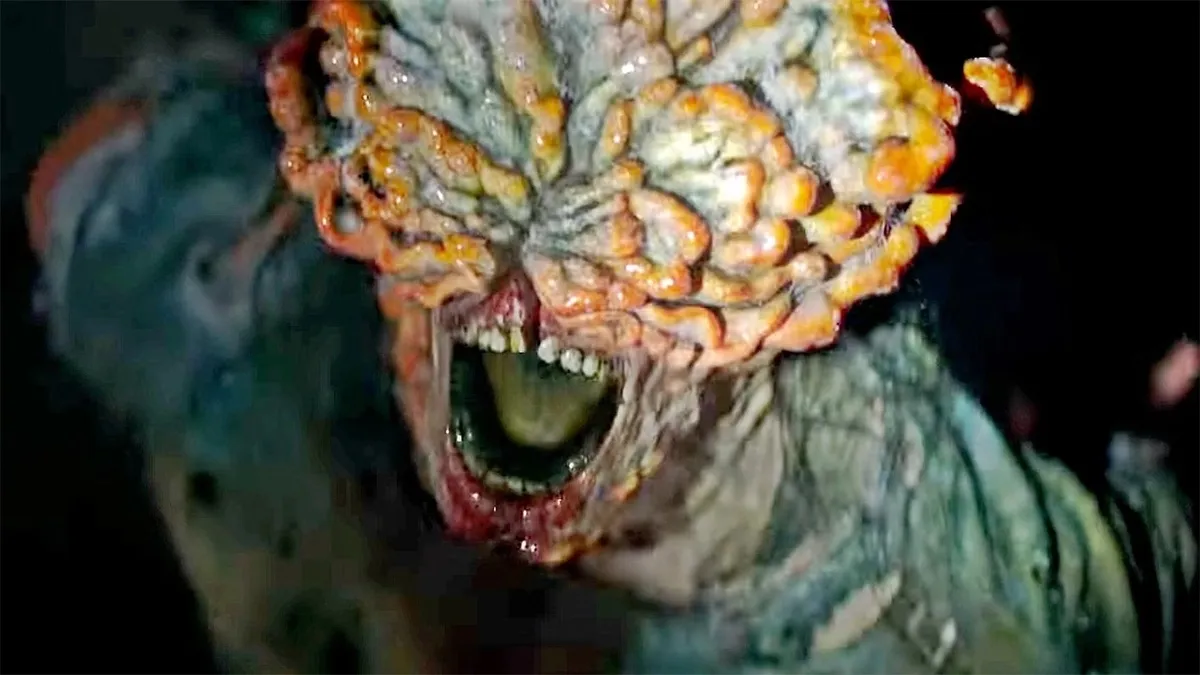HBO’s The Last of Us is many things. It’s a beautiful depiction of a gay couple getting to grow old together in an apocalypse. It’s a meditation on children being forced to grow up too fast and too soon. It’s a vehicle for some great songs. And it’s a kick-ass fungus-fueled survival thriller.
Like the original video game, The Last of Us depicts multiple stages of the brain-eating Cordyceps infection. While we’ve only seen a couple of these stages in the show so far, the game gives us a much more detailed progression. Here are the infection stages in the original The Last of Us game—and what we could expect as the series progresses.
Stage 1: Runner
Remember that scene in episode 1, where Sarah is looking at DVDs and the old lady behind her starts convulsing? That’s stage 1 of the Cordyceps infection. After her infection, Sarah’s neighbor gains the ability to move inhumanly fast, attacking and killing the other members of her household. In this stage, the Infected still look human, but they behave like the zombies in 28 Days Later, running down their prey and tearing them apart.
Stage 2: Stalker
The next stage of infection is the stalker. Stalkers have begun to show visible signs of the Cordyceps growing inside them, with mushrooms popping out of their skin here and there. In the game, Stalkers are often adhered to the walls with fungus, and although they’re not as fast as Runners, they can still pop out of their casings to attack you. We’ve seen some bodies stuck to the walls in the first few episodes of the series, but it’s not clear yet that they’re still mobile enough to attack. The person Ellie finds buried under rubble in episode 3 might be a Stalker—visibly infected, but not quite a Clicker yet.
Stage 3: Clicker
Ah, the iconic Clickers! Here’s where things get really creepy. By the time someone has reached the Clicker stage, their bodies contain so much fungus that their skulls split open, revealing huge mushrooms. These mushrooms obscure their eyes, rendering them blind, so they use clicking noises as a form of echolocation to find their prey.
Stage 4: Bloater
It’s tempting to think of Clickers as the most advanced stage of the Cordyceps infection, but that fungus doesn’t quit. After becoming a Clicker, the Infected gradually progress to Bloaters. Bloaters are slow-moving and covered in mushrooms, which act as a sort of armor. In the game, these mushrooms are full of deadly acid, and the Bloaters can tear them off and throw them at you. There’s a variation on Bloaters called Shamblers, which can shoot acid directly without having to fumble with their own mushroom caps.
Stage 5: Rat King
There’s an urban legend in New York City about a bunch of rats with their tails all tied together. Collectively, these rats are called a Rat King, and that’s what this final stage of the Cordyceps infection is based on. Eventually, in the game, the bodies of the Infected start to break down and mash together into huge, composite horrors. As a video game boss, the Rat King is a formidable enemy, but it remains to be seen if one of them will make an appearance in the HBO series.
Need more Cordyceps in your life? The Last of Us is now streaming on HBO Max.
(featured image: HBO Max)










Published: Feb 6, 2023 06:45 pm